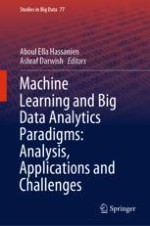2021 | OriginalPaper | Chapter
Comparative Analysis of Different Approaches to Human Activity Recognition Based on Accelerometer Signals
Author : Walid Gomaa
Published in: Machine Learning and Big Data Analytics Paradigms: Analysis, Applications and Challenges
Publisher: Springer International Publishing
Activate our intelligent search to find suitable subject content or patents.
Select sections of text to find matching patents with Artificial Intelligence. powered by
Select sections of text to find additional relevant content using AI-assisted search. powered by
